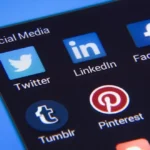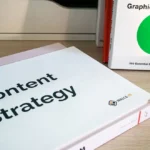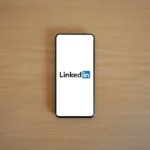Right, let’s talk Sales Navigator. I was chatting with Muhammad the other day, and he was telling me about how he’s been absolutely killing it with lead generation using LinkedIn. His secret? He’s become a total wizard with Sales Navigator’s advanced search filters. And honestly, it’s opened my eyes to a whole new level of targeted outreach.
“It’s all about getting really specific,” Muhammad explained. “You can’t just blanket the platform with generic messages and hope for the best. That’s a waste of everyone’s time.”
And he’s spot on. So, how does Muhammad do it? Let’s break it down, bit by bit, to get your lead generation firing.
1. Diving Deep with Advanced Search
First things first, you need to become intimate with those advanced search filters. We’re talking beyond just job title and industry. Muhammad uses a combination of at least three filters to narrow down his prospects. For example:
- Job Title: He doesn’t just search for “Marketing Manager”. He might look for “Digital Marketing Manager and SEO Specialist” to capture a wider net of relevant individuals.
- Company Size: This is key for tailoring your message. A massive corporation has very different needs and priorities than a scaling startup. Muhammad uses the headcount filter to target companies within a very specific range.
- Industry: Obvious, but don’t stop at just the main industry. Use the keywords filter to add niche areas within the industry. This refines the search and gets you in front of people you might otherwise miss. For instance, if you are focusing on the food delivery sector, rather than just search for ‘Food and Beverages’ you might add filters to include ‘Last Mile Delivery’ and ‘Food Technology.’
- Skills: This is where things get really interesting. Target people who possess specific skills related to your offering. Are you selling project management software? Target individuals with “Agile Project Management” or “Scrum Master” skills. This indicates a certain level of professional experience and indicates they may be more receptive to your product.
- Groups: What groups are your ideal customers members of? Finding relevant groups and filtering by the members, can allow you to build the same level of context as finding people with Shared Connections.
- Shared Connections: One of the most powerful tools. If you have shared connections, it makes reaching out so much easier. More on that later.
Muhammad’s secret weapon is layering these filters. He’ll combine job title, company size, skills, and even keywords in their LinkedIn profiles to create hyper-targeted lists.
“Think about it,” he said. “Someone who’s a ‘Head of Innovation’ at a ‘Series B funded startup’ with ‘AI’ listed as a skill – that’s a completely different lead than a ‘Marketing Assistant’ at a ‘large enterprise’.”
2. The Power of Shared Connections
Remember I mentioned shared connections? This is where things get really good. Seeing a mutual contact significantly increases the chances of your message being read, and even acted upon.
Here’s Muhammad’s strategy:
- Identify Mutual Connections: After running your advanced search, pay close attention to the “Shared Connections” column. Seeing a familiar name immediately adds credibility.
- Request an Introduction (Strategically): Don’t just blindly ask for introductions. First, research the person you want to connect with. Understand their role, their company, and their pain points. Then, craft a personalised introduction request. Let the mutual connection know why you want to connect and how it would be mutually beneficial.
- Crafting the Perfect Introduction Request: This is crucial. A generic “Hey, can you introduce me to this person?” won’t cut it. Muhammad gave me an example: “Hey [Mutual Connection’s Name], I hope you’re doing well! I noticed you’re connected with [Target Prospect’s Name], who I see works at [Company Name]. I’m reaching out to [Target Prospect’s Name] because [Specific reason related to their role and company]. Would you be open to making a brief introduction? I’ve drafted a short message for them, if that makes it easier for you.”
- Offer Value First: Before asking for an introduction, consider engaging with your prospect’s content. Leave thoughtful comments on their posts, share their articles, and demonstrate that you’re genuinely interested in what they have to say. This builds rapport and increases the likelihood of a positive response when you do reach out.
3. Tailored Outreach: It’s All About Relevance
Once you’ve identified your target audience, the next step is to craft a message that resonates. Ditch the generic sales pitch and focus on their specific needs and interests. Muhammad told me:
“I tailor every single message to the individual. I look at their profile, their recent activity, and their company’s news. Then, I explain how my product or service can solve a specific problem they’re facing.”
Example: If you’re selling a cybersecurity solution and you see that a prospect’s company recently experienced a data breach (publicly announced, of course), you could mention that in your message. “I noticed [Company Name] recently had [Specific issue]…” This demonstrates that you’ve done your research and that you’re genuinely interested in helping them.
4. Nurturing Your Network
Finally, it’s crucial to remember that LinkedIn is a long-term game. Building and nurturing your network is an ongoing process. Muhammad emphasises:
- Consistent Engagement: Regularly share valuable content, participate in relevant discussions, and connect with industry leaders.
- Genuine Interactions: Avoid spamming your network with promotional messages. Focus on building genuine relationships and providing value.
- Personalised Follow-Ups: After connecting with someone, send a personalised thank-you message. Continue to engage with their content and nurture the relationship over time.
So, that’s Muhammad’s secret sauce. By mastering Sales Navigator’s advanced search, leveraging shared connections, crafting tailored outreach, and nurturing his network, he’s consistently generating high-quality leads. It’s about quality over quantity, focusing your energy where you will get the most engagement, but still ensuring that your network is maintained, and engaged, to give you the best opportunity to find that next winning lead. It requires the user to develop their understanding of the target clients and the products on offer and matching the two in creative and focused ways. It’s definitely given me a lot to think about and I’m already excited to start implementing these strategies myself.











